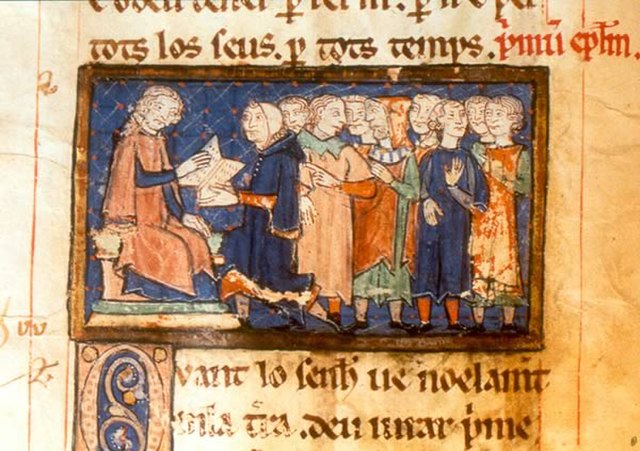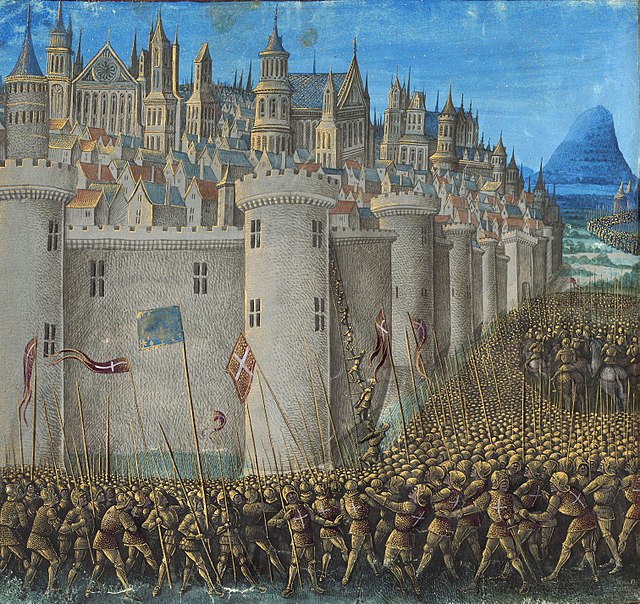Consul was the title of one of the two chief magistrates of the Roman Republic, and subsequently also an important title under the Roman Empire. The title was used in other European city-states through antiquity and the Middle Ages, in particular in the Republics of Genoa and Pisa, then revived in modern states, notably in the First French Republic. The related adjective is consular, from the Latin consularis.
Caffaro di Rustico da Caschifellone, statesman of the Genoese Republic in the 12th century, for which he served eight terms as a consul.
In this painting, Alphonse, Count of Poitiers and Count of Toulouse takes an oath before the Consuls of the town of Agen, with his right hand on the town ordinances, committing himself to recognize the autonomy of the town's commune, while sitting on a pedestal. The consul administering the oath is forced to go on his knees, symbolizing Alphonse's lordship and the town's loyalty.
A portrait of the three consuls, Jean-Jacques-Régis de Cambacérès, Napoleon Bonaparte and Charles-François Lebrun (left to right)
The Republic of Genoa was a medieval and early modern maritime republic from the years 1099 to 1797 in Liguria on the northwestern Italian coast. During the Late Middle Ages, it was a major commercial power in both the Mediterranean Sea and the Black Sea. Between the 16th and 17th centuries, it was one of the major financial centers in Europe.
The Siege of Antioch, 1098.
Galata Tower (1348) in Galata, Istanbul.
The Genoese fortress in Sudak, Crimea.
A view of Genoa and its fleet by Christoforo de Grassi (1597 copy, after a drawing of 1481); Galata Museo del Mare, Genoa.







